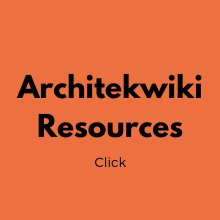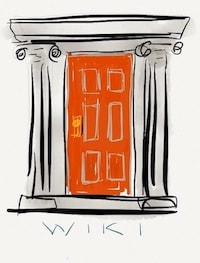|
The goal of design isn't the design, but a building. The construction of the building isn't (normally) the Architect's responsibility - the General Contractor or Construction Manager has that role [the constructor]. However the Architect does have a role in seeing that what is built meets the documents that he/she has prepared, and that the Owner receives the building that he/she has paid for. So here is an overview of the Architect's role during construction. Construction Start UpThe Construction Administration [CA] Phase usually starts when the constructor receives a signed contract or a Notice To Proceed [NTP]. The end of the CA Phase is often blurry, but is roughly when the Owner occupies the building. No two projects are the same, however the main tasks during the CA Phase are these. Pre-Construction Meeting As soon after the the constructor is selected as you can arrange, hold a kick-off meeting. This is referred to as the Pre-Construction Meeting. Here is a typical agenda. This is a one-time affair, but you might want to hold similar meetings just before the start of critical parts of the project to make sure everyone is on the same page, e.g. masonry, roofing. In each case the purpose of the meeting is to make sure the contractors understand what is required and expected of them. Ongoing ConstructionProgress Meetings Multiple times during construction there should be meetings to discuss progress and any issues/problems that have arisen. The tighter the schedule the more frequent these meetings should be, but they are normally held monthly, bi-weekly or weekly. The constructor is supposed to run these meetings, but it is not unheard of for the Architect or even the Owner to be in charge. The constructor often uses these meetings to remind his subcontractors of safety procedures, establish access to, and use of, the site and similar issues. The main purpose, though, is to discuss progress and what problems need to be overcome to stay on schedule. Sometimes the constructor needs 'help', and it is OK to offer advice; but be careful that you don't dictate ways and means, which are the constructor's responsibility. You could be held responsible for your directions if there are problems. Test Reports Some of the work is tested by a third party, who submits a report on the findings. You will need to review these reports promptly to determine if the work meets the specifications; and, if not, take action to have it corrected. Except for remodeling projects, the soil compaction and concrete strength are normally tested. Masonry mortar and grout, roofing, paving are often tested. The International Building Code requires 'Special Inspections' for many buildings, although the local authorities having jurisdiction often interpret this requirement in vastly different ways. Submittals Submittals consists of shop drawings that show how the fabricator plans to implement the Architect's drawings. There are also Product Data Sheets and Samples that will be submitted for approval. Within a week or ten days of receiving these submittals, the Architect reviews them, marks them with any deficiencies, and returns them, while retaining a copy for his records. See this article. It is common for the subcontractors to submit documents showing the way they always do things instead of the way you have specified. It gets really messy when you approve a submittal and later realize it is wrong. Attention to detail can save you time in the long run, not to mention the 'egg on your face'. Pay Requests Usually once a month the constructor submits an invoice for the work completed. Nearly everyone uses the AIA forms for this or a spreadsheet formatted in the same way. This Request For Payment should show a logical breakdown of the costs of the project so that it is easy to determine if you agree that each aspect of the work is complete to the extent claimed in the pay request. You might want to visit the site to see if you agree with the breakdown. Allowing the contractors to be paid for more work than they have achieved reduces the only leverage you have for good performance - the money. If you disagree, tell the constructor to change it. Modifying it yourself, while legitimate, invariably creates accounting headaches for the parties involved. They would rather change it. Site Visits Periodic site visits and reports varies in frequency by project and also by the work in progress. For example, earthwork may take months and may be tested by the soils engineers, so a monthly visit is more than enough. Concrete work on the other hand covers any evidence of faulty work as they go and you may want to be present before every pour. I am always curious about what work is expected to be undertaken in the next two weeks in case I want to check on the way it is completed. It is normal to prepare a Field Report about your visit, which notes date, time, weather, who is present, work in progress, your observations and any instructions you may have given to the superintendent. Requests for Information When the constructor has a problem, a formal Request For Information may be used to get direction. The Architect needs to act on these requests as soon as possible. It is not unheard of for the Architect to be sued for delaying the construction. The direction you give must be in accordance with the construction documents. If not, a change may be required to the contract. Change Orders Some projects don't have changes, but nearly all do. Humans are fallible. Owner's change their minds. Better ideas come to light. In each case the contract for the construction work needs to be amended by a Change Order. The Change Order states the amount of money for the change, a description of the work it encompasses, any change in project duration, and any background information like details, pricing, and so on. The dollar amount of the Change Order may increase or decrease the Contract Sum. Not surprisingly, increases outnumber decreases by about 20 to 1 in both quantity and amount of money. Owners do not like Change Orders. The Serene Architect avoids Change Orders. Construction Close OutThe Punch List See this article. When the project is nearly complete, a Punch List is prepared to determine any work needing correction. It is in everyone's interest to correct the work as it proceeds, and the Punch List isn't intended to be a list of what is left to be done. Some Owners want to be involved, most do not. Your engineering consultants should make their own reviews and lists. Once complete, the Punch List is given to the constructor to oversee completion of the items; and the Architect makes one or more re-visits to confirm that the work has been corrected acceptably. Getting subcontractors to return for an hour's worth of work is challenging. But the project can't be closed out until the Punch List is complete. Certificate of Substantial Completion An AIA form is often used to document this milestone, and many contracts require its documentation. Sometimes Substantial Completion is the trigger for retainage (money held back from pay requests) to be reduced or released. If the project is bonded, the constructor's surety must give consent to any change in the amount retained by the Owner. The main prerequisite for declaring that the project is substantially complete is having received a Certificate Of Occupancy from the authority having jurisdiction. The Certificate of Substantial Completion documents the constructor's and the Owner's agreement on when insurance will change hands, when responsibility for security will change over, what remains to be complete and by when, and the start date for warranty periods. Close Out The process of closing out a project is the reason that the end of the Construction Administration Phase is blurry. You and the Owner want to receive a number of documents. The Owner still has to make the final payment to the constructor, and that is the only leverage for ever getting those documents. Here is a listing: CLOSEOUT SUBMITTALS
Warranty Inspection Because many warranties lapse after one year, it is a good idea to make a walk-through at about ten months after Substantial Completion. Some Owner-Architect agreements require it. If not, you might offer it as an additional service or look upon it as a marketing opportunity. Most things that are warranted are not items that you can check visibly. Often you will need to interview those who would know whether anything leaks, the AC works, hardware functions, etc. Having overseen the completion of these warranty items, the project is complete and the Construction Administration Phase ends. My experience is that being involved with the Owner during Construction is crucial to the impression that the Owner has of you. Whoever is involved in solving the inevitable mistakes (both yours and the constructors), tends to seem like the person who got it built. The constructor would love to take this off your hands, but only the constructor is well served when that happens. Comments are closed.
|
x
Archives
February 2024
Categories
All
|
Architekwiki | Architect's Resource | Greater Cincinnati
© 2012-2022 Architekwiki
© 2012-2022 Architekwiki








